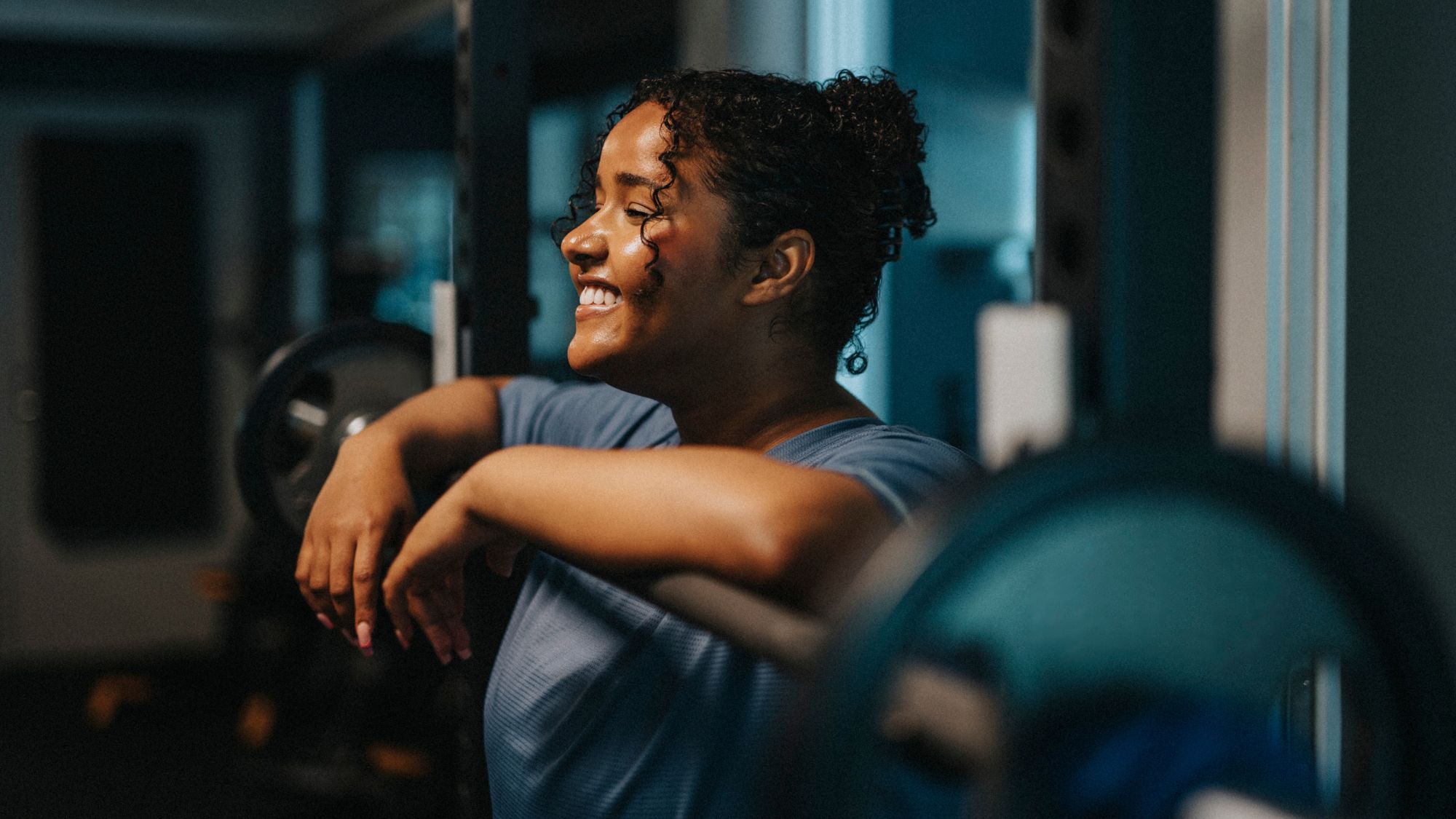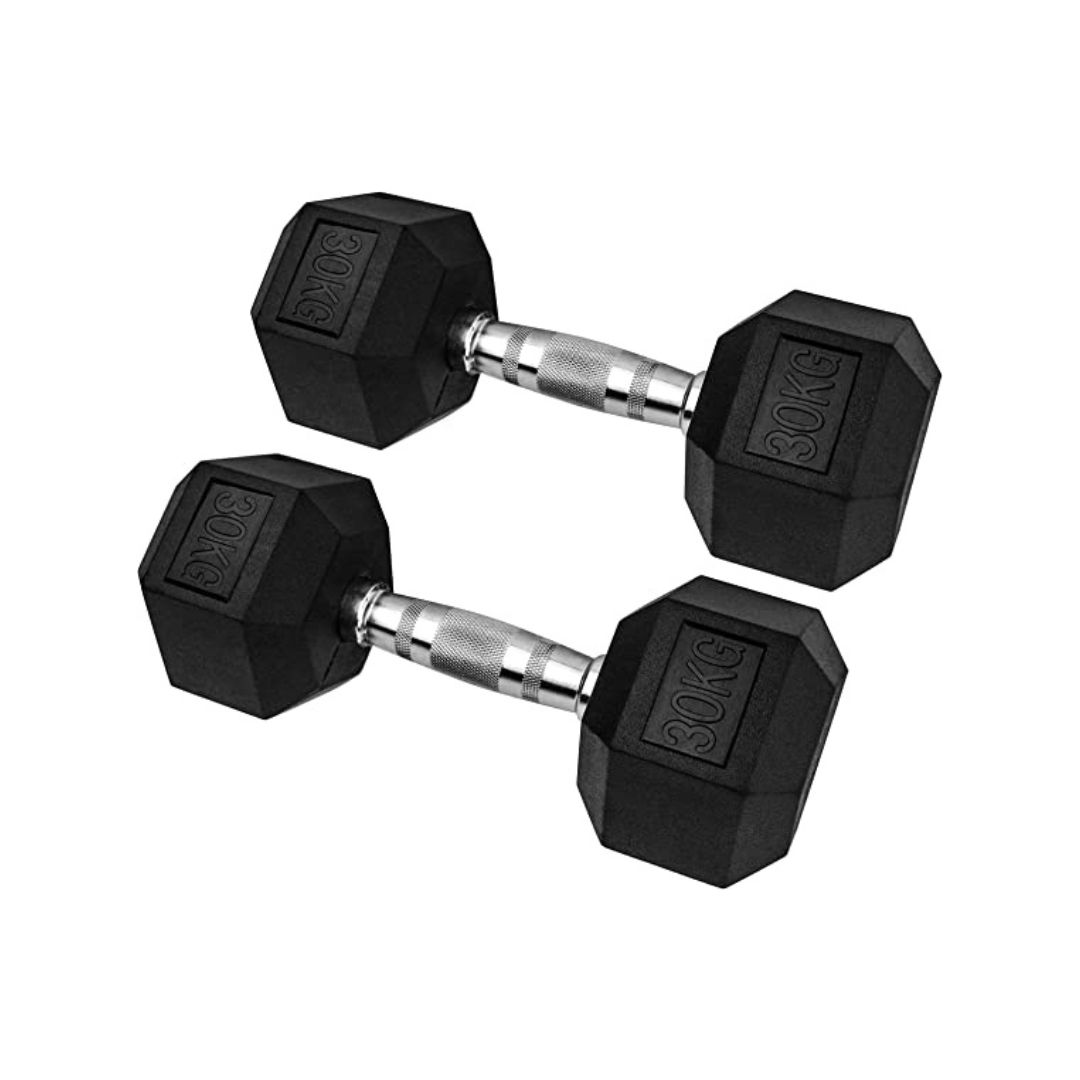A Top Coach Just Confirmed: This is the Exact Way To Structure Your Weight Workouts for Max Results
No PT? No problem.


In her book Unbelievable, published just after winning gold at the London 2012 Olympics, Jessica Ennis-Hill reflects on the anxiety she felt as a teenager about building muscle and developing an “athlete’s body.” At the time, as a young athlete reading her words, I related hard. It perfectly captured how pervasive the messaging around women’s bodies was in the early 2000s and 2010s, a time when many of us idolised skinniness and feared the “bulk” associated with muscle.
Thankfully, the narrative has shifted since then, not just aesthetically, but in terms of our understanding of long-term health. At the risk of sounding like a cliché, the “strong not skinny” movement has been a game-changer for women’s health, helping to reframe strength training as not only empowering but also protective for our bodies. In fact, a 2024 study of 400,000 people found that women who strength trained had a 30% lower risk of dying from a cardiovascular condition, a reduction more significant than was seen in men.
As a health writer and former track and field athlete, I’ve been lucky enough to work with some of the UK’s top strength and conditioning coaches, and I’ve seen first-hand how they programme athletes to meet performance and strength goals. It meant that I’ve mostly avoided the intimidation that often comes with walking into a weights area, and I’ve had a decent grasp of what’s required to build strength.
But since hanging up my spikes, even I’ve found it tough to build a consistent, effective strength routine. More often than not, I’ve caught myself wandering around the gym doing a few aimless sets without any real structure or purpose.
I know I’m not alone, either. Unless you’ve studied sports science or come from a training background, designing your own programme can feel almost impossible. It’s one of those “you don’t know what you don’t know” situations, and in fact, recent research from Muscle Booster found that 81% of us are inadvertently missing out on key muscle groups in our training, potentially compromising our strength goals entirely.
Of course, personal training is always a brilliant option if it’s accessible to you - offering real-time guidance, motivation and support with technique and recovery. But not everyone has the time, budget or confidence to invest in 1:1 coaching, especially if the gym already feels a little intimidating.
The good news is that once you understand the basic principles of how muscle is built and what a good session looks like, creating your own programme can be surprisingly simple. That’s why we’ve asked two former Commonwealth Games athletes, who are both now leading coaches, to break down the basics for us.
Celebrity news, beauty, fashion advice, and fascinating features, delivered straight to your inbox!
Interested? Keep scrolling. Below you’ll discover what strength and conditioning actually is, the benefits it can bring you, and how to actually structure your sessions to become stronger, safely and effectively.
And if you’re looking to learn more about building muscle, we’ve got guides to the types of strength training, the best strength training exercises, and a first-hand account from Health Editor, Ally Head, who integrated a 30-minute home strength workout into her training routine every week for eight months.
Ever Wondered How To Structure Your Strength Sessions? Two Top Coaches Share Everything You Need To Know
What is strength and conditioning?
According to personal trainer and co-founder of VOW Fitness, Jessica Putnam, strength and conditioning is about so much more than just lifting heavy in the gym. “S&C is the process of training your body to perform, move and feel better, through strength work, cardio, mobility and injury prevention,” she explains. “It’s about teaching your body to be strong, resilient and capable across all aspects of life.”
While the ‘strength’ part of the equation is our main focus here, it’s worth noting that both elements (strength and conditioning) are designed to work together. Commonwealth Games decathlon bronze medallist and Director of Performance Pathways, Martin Brockman, puts it like this:
“Strength increases our capacity to perform by improving force generation, but it’s the conditioning component which allows us to apply our strength effectively and safely. As we get stronger, greater demand is placed on our tendons, ligaments, and joints. Conditioning addresses this by developing supporting tissues, improving movement efficiency, and increasing mobility and stability. Together, these adaptations reduce injury risk and enhance the body’s ability to tolerate training long-term.”
In short? Strength and conditioning isn’t just for elite athletes. It’s a training approach which is both sustainable and effective, and which will help your body thrive both in and outside the gym.
What are the benefits of strength training for women?
Strength training is important for everyone, but for women, it can be revolutionary. From a physiological, hormonal, and psychological perspective, the benefits are far-reaching, and crucially, it can help to protect conditions which disproportionately affect us as we age. Take osteoporosis, for instance, which affects over two million women in the UK, and which research shows is most effectively prevented through resistance training.
“During menopause, when oestrogen declines, there is an accelerated loss of bone density, which increases women’s susceptibility to osteoporosis,” explains Brockman. “Resistance training helps to slow this process by stimulating bone tissue while simultaneously strengthening the muscles and tendons that act as shock absorbers, reducing stress on the skeleton and lowering the risk of bone-related injuries.”
But the benefits don’t stop there. Strength training also has a significant impact on hormone regulation and metabolic health.“Strength work also helps to regulate hormones and improve insulin sensitivity by improving how your body uses glucose,” adds Putnam, a point particularly important for women living with reproductive conditions such as PCOS, where insulin resistance is a key driver of symptoms.
Then there’s body composition. Regular resistance training builds lean muscle, which helps to increase tone and definition, as well as boost resting metabolic rate. “Lean muscle increases the number of calories the body burns at rest, making it easier to manage weight in a healthy way,” explains Brockman.
It’s also a key tool for injury prevention - something you may not have realised you’re more at risk of as a woman. “During puberty, women’s pelvis widens, which increases the inward angle of the femur and places greater stress on the joints of the lower body, particularly at the knee,” says Brockman. “Strengthening and stabilising the hips, knees and ankles becomes increasingly important in preventing injury, by improving movement control and reducing the likelihood that the body will be forced into positions that compromise the joints.”
And beyond the physical? Strength training is downright empowering.
“Strength training is a game changer for women’s confidence,” concludes Putnam. “There’s something incredibly powerful about picking up a heavy weight and realising your body can do it.”
How to structure your strength and conditioning sessions for full body strength, according to leading coaches
So, how do you take all that theory and turn it into a programme that actually works, and fits into your life?
While an individualised approach is always best (and listening to your body is non-negotiable), the two coaches agree on a set of key principles that can help you get started and stay consistent.
1. Session Frequency
“For women aiming to build strength, improve muscle tone and protect their joints, a well-structured programme of two to three strength sessions per week, ideally spaced 48 to 72 hours apart, is highly effective,” says Brockman.
2. Exercises and load
When it comes to what to include, both coaches recommend basing your session around one or two big lower-body moves (think squats, deadlifts or lunges), which Putnam calls the “big rocks”:
“For those seeking to maximise strength, heavier loads with lower repetitions, such as five sets of five, are most effective,” explains Brockman. “For those prioritising general health and muscle tone, two to four sets of eight to twelve repetitions strike the right balance between strength and capacity building.”
“The remainder of the exercises should aim to create balance across the body,” says Brockman, means incorporating both upper-body pushing and pulling moves (think press-ups, bench press, rows, overhead press, pull-ups or lat pulldowns), plus work for supporting muscles such as the abductors and adductors.
And don’t forget your core, but think beyond crunches. ““Anti-rotation moves like planks, Pallof presses or loaded carries are great for building core strength and stability,” says Putnam.
Put together like this, your training plan doesn’t have to be intimidating or time-consuming, says Brockman. “You’ll get the benefits of improved strength, joint resilience and long-term health, without the volume or complexity that often deters people from stepping into the gym.” Sounds like a win to us.
3. Tracking progression
Unless you’re training for a specific event, it can be hard to know if you’re improving, when to dial things up and when to taper off.
“As a general rule, it’s a good idea to change things up every six to eight weeks,” suggests Putnam. “You can do this by adding weight, increasing the reps or sets, or swapping in a different exercise to work the same muscle group.”
That said, Brockman is clear that the most important marker of progress isn’t the numbers, it’s the consistency.
“Before focusing on weights or repetitions, ask yourself whether you are showing up regularly and completing the sessions you planned. The body adapts to the demands placed on it, which means it needs a consistent training stimulus in order to respond and improve.”
Once that base is built, you can start tracking progress in more specific ways.
“Keeping a training diary where you log the exercises performed, the weights used, the repetitions completed, and how the session felt, provides a clear picture over time,” says Brockman. “Progress can then be seen by lifting heavier weights for the same number of repetitions, or by completing more repetitions or sets with the same weight. Or it may come through efficiency, by performing the same workout with less fatigue.”
To keep training fun and a little competitive, Putnam suggests introducing some light testing every eight to twelve weeks. “You could test your one-rep max for the deadlift, or how many press-ups you can do in one go, make a note of it and test again in a couple of months,” she says.
4. Don’t forget recovery
Whilst most of us won’t need a full-blown rest week in the way that elite athletes do, building in recovery is still a non-negotiable if you want to stay injury free.
“For most people, effective recovery starts with allowing adequate rest between sessions,” says Brockman, which is why leaving one or two days between strength sessions that target the same muscle groups is important to give your body time to repair and adapt.
Rest doesn’t have to mean doing nothing, though. “Cardio helps to support blood flow to the muscles, while yoga helps to maintain flexibility and develops stabilising muscles which recover much faster than the large muscle groups,” he says. “Playing sports between strength sessions is also a great way to increase blood flow and put your new strength into action.”
Putnam recommends taking a lighter training week, with reduced intensity, volume, or one fewer session, every six to eight weeks.“It gives your joints time to recover, prevents burnout, and ultimately makes you stronger in the long run.”
And finally, remember: no guide or plan beats listening to your own body.
“If you’re constantly sore, tired or plateauing, it’s probably time for a lighter week,” says Putnam, who reminds us that recovery is important to keep training enjoyable.
“The main thing is to enjoy what you’re doing. Find a style of training you genuinely look forward to, and don’t be afraid to challenge yourself. Setting goals is powerful because real progress and that sense of pride in what your body can do, always happens just outside your comfort zone.”
Shop MC-UK strength training essentials now:
Can I build an effective strength training programme from home?
The idea of strength training might appeal, but for many of us, stepping into a gym can feel daunting. Whether it’s the cost, time commitment, or simply not feeling comfortable in that environment, it’s a barrier which can’t be ignored. The good news? You can build a strong, effective strength routine from home - with just a few bits of kit, and no membership required.
“You can absolutely build a strong foundation of strength from home, especially if you’re new to lifting,” says Personal Trainer and Co-Founder of VOW Fitness, Jess Putnam, who tells us that consistency of training matters far more than where you’re doing the work.
She suggests starting out with a pair of dumbbells, a selection of resistance bands and your bodyweight. “As you progress, you can add reps, sets or resistance bands to increase load,” she explains.
That said, as you get stronger and more experienced, you might find yourself craving more variety or challenge. That’s when a gym can become helpful.
“Muscles and connective tissues adapt to the loads they are exposed to, and eventually a pair of dumbbells or a set of resistance bands may no longer provide enough challenge,” says Commonwealth Games Decathlon Bronze Medallist and Director of Performance Pathways, Martin Brockman.
A gym environment can offer access to heavier weights, machines and a wider range of equipment, all of which support long-term strength development in a more measurable way.
But don’t feel pressure to start there (or ever go there) if it’s not your thing. “For many people, particularly those looking to improve general health and movement quality, home-based training remains the most practical and sustainable option,” says Brockman. “It lowers the barriers to entry, removes the pressure of the gym environment, and still delivers the core adaptations that matter most for strength development.”

A former heptathlete, Ashleigh is a freelance journalist, specialising in women’s health, wellbeing and lifestyle, with words in Stylist, Cosmopolitan, Glamour and Marie Claire. She’s also the Co-Founder of Sunnie Runners, an inclusive London based run club.


